An exhibition in Oderzo celebrates Alberto Martini and his drawings of Edgar Allan Poe's short stories
On the occasion of the 70th anniversary of the death of Alberto Martini (Oderzo, 1876 - Milan, 1954), Oderzo (Treviso), his hometown and home of the Pinacoteca dedicated to him, is hosting at Palazzo Foscolo, from September 27, 2024 to March 25, 2025, the exhibition The Extraordinary Stories. Alberto Martini and Edgar Allan Poe. Curated by Paola Bonifacio and Alessandro Botta, with the scientific coordination of Carlo Sala, promoted by the Fondazione Oderzo Cultura among the Great Events of the Veneto Region, under the patronage of the Municipality of Oderzo, the exhibition presents more than 120 works, including paintings, drawings and volumes, many of which have never been exhibited before or are unpublished, from museums, important collectors and Martini’s heirs. The exhibition, organized by Villaggio Globale International, will also present a selection of drawings that the artist made of Edgar Allan Poe’s various short stories. Never has such a large corpus of Martini’s drawings of Edgar Allan Poe’s Tales been presented together.
The exhibition begins with Martini’s self-portrait, dated 1914, and the famous Lucifer, taken from the illustrations of The Divine Comedy, which serves as the symbol of the celebrations. Some of the artist’s earliest works dating from the last decade of the 19th century testify, on the one hand, to his connection with the rural landscape of the Treviso countryside, which Martini will always remember with love, and on the other, to his attention in these years to the lives of workers and the less affluent social classes. The sketch on cardboard and the large oil on canvas depicting an Antica gualchiera trevigiana, for wool processing, will be presented together for the first time, followed by a number of drawings from the cycle The Courts of Miracles inspired by Victor Hugo and the Poem of Labor - on subjects of his own invention. In these early works, as well as in the Albo della morte, in which stylistic references to sixteenth-century Nordic graphic art are evident, the poetic impetus combines macabre imagination with epic tone, the distressing vision of poor people and the claims of workers, with visions of nature of symbolist intonation.
It was in these years that the artist approached the illustration of literary works: famous are the one hundred and thirty heroicomic drawings (actually 252 plates) of Tassoni’s La Secchia Rapita, a selection of which will be on display in the exhibition.
Fundamental to Martini’s career was his meeting with Vittorio Pica, the Neapolitan critic who was among the founders of the Venice Biennale and its secretary general from 1920 to 1928, who supported him and made him known to the Italian and European public. The exhibition pays homage to this association through the Ex libris made for Pica and exhibited at the Biennale in 1905, and with the oil on canvas La Fiaccola, never before exhibited in Italy. This symbolist work, rich in allegorical references, testifies to the deep connection between painting and drawing in Martini’s art.
Two drawings from the cycle The Parable of the Bachelors presented in Venice in 1904 will follow in the exhibition itinerary: strong, dreamlike images and nocturnal atmospheres, also present in Moon in the Dead Lagoon, stage the theme of corrupting femininity, so beloved by international Symbolism.
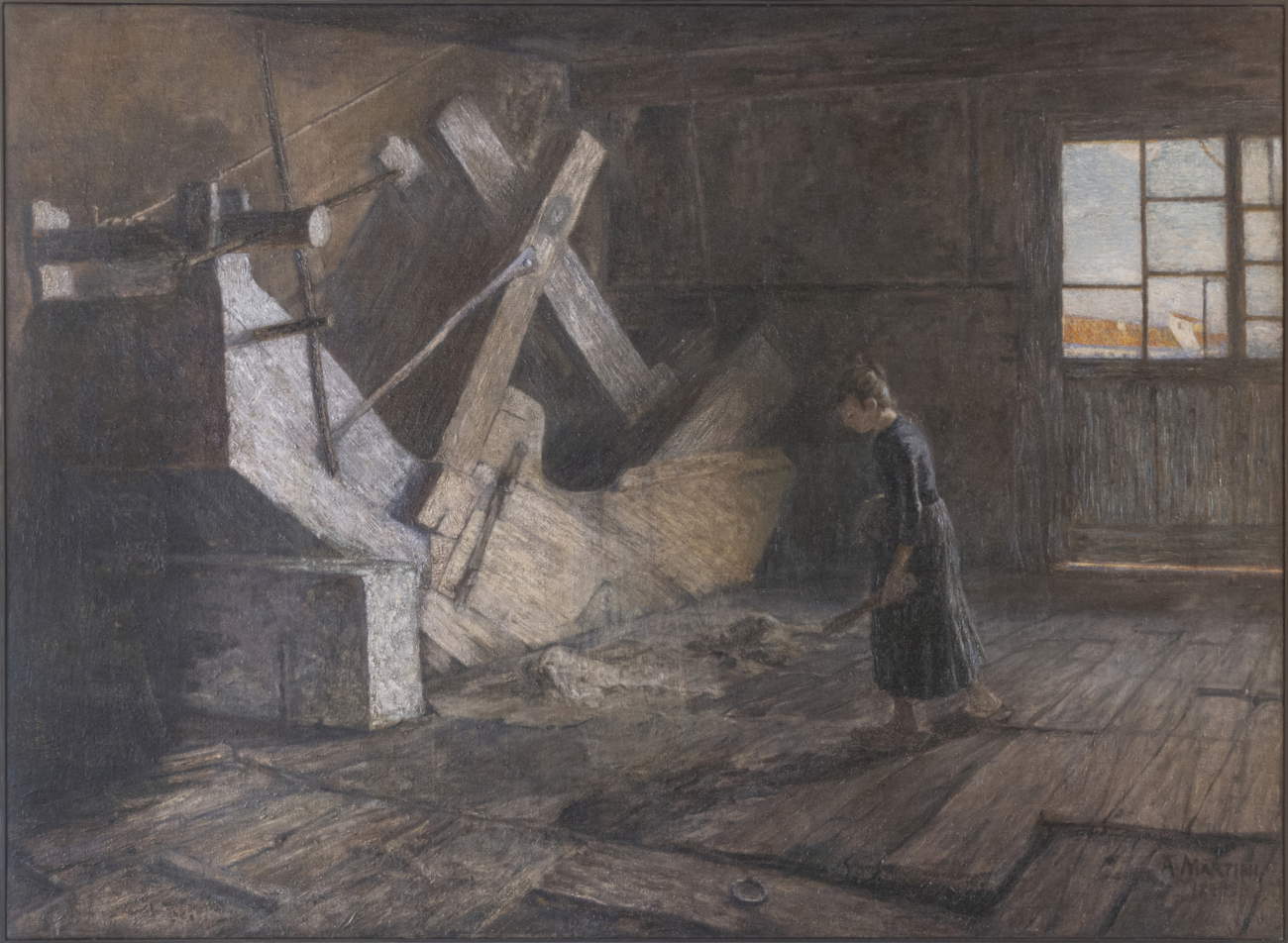


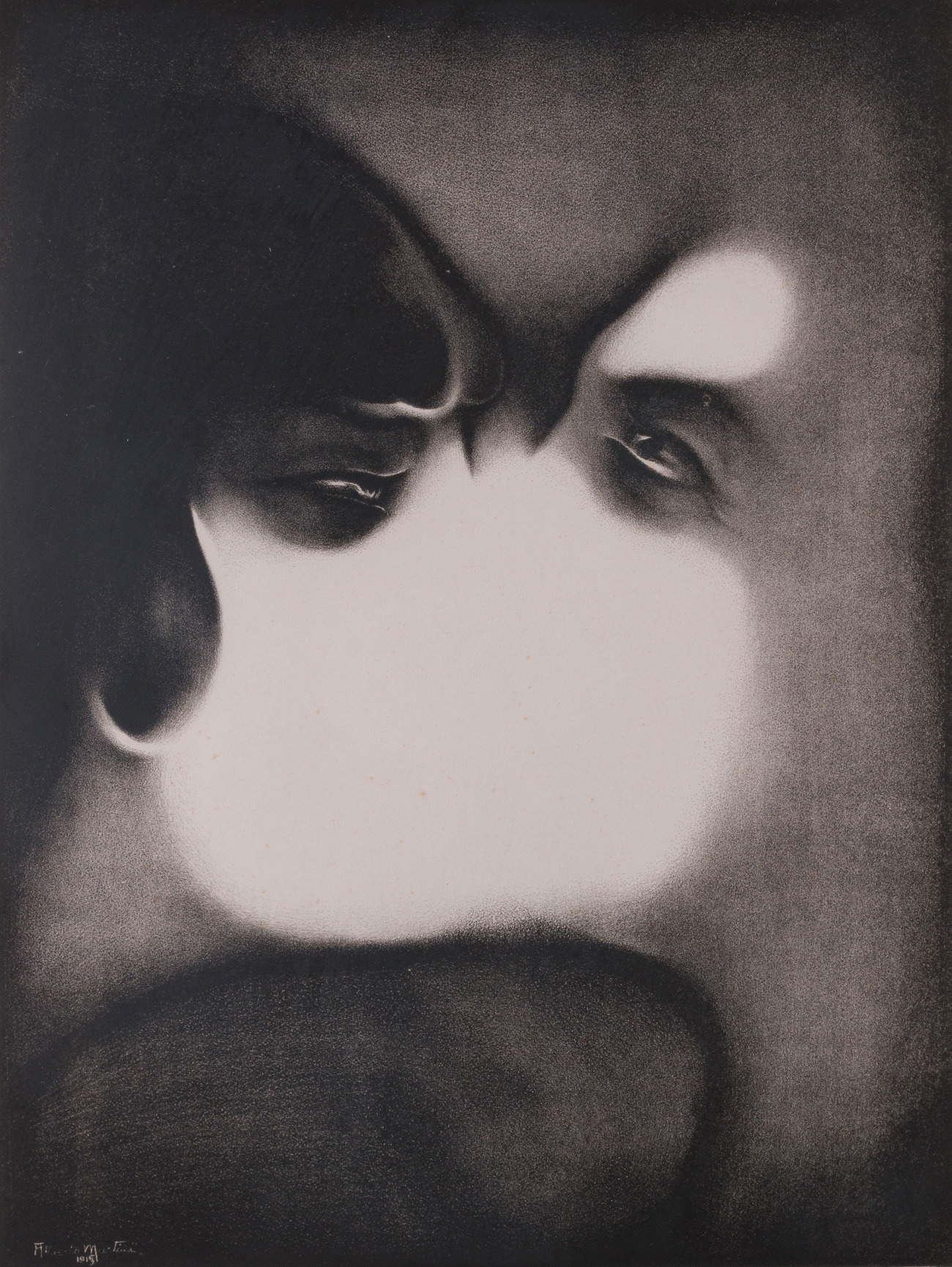
Alberto Martini, a multidisciplinary and visionary artist and advocate of total art, proves himself in the splendid Symbolist oils destined to be exhibited in the so-called Room of Dream at the Seventh International Art Exhibition in Venice in 1907. Nel sonno, Diavolessa and Notturno, are brought together on this occasion for the second time after the famous Biennale and twelve years after their last exhibition. They are paintings where the landscape becomes a transfiguration of states of mind. Although his work Diavolessa was expelled from the Biennale, Martini continued his creative journey with works such as the pastels made between 1912 and 1913, in which the subject of butterflies is recurring, and the stone lithographs of 1915: The Kiss and The Mouth.
The exhibition then documents the stimulus coming from foreign literature and the passion for theater, already highlighted in The Parable of the Bachelors and culminating in the visionary invention of Tetiteatro in 1923, which will be recalled in the exhibition with some drawings inspired by Shakespeare’s tragedies already close to Poe’s macabre and horrific spirit - Hamlet and Macbeth - and the original drawings of Heart of Wax, exhibited in 1985. During these years there were many prominent personalities with whom the artist had significant friendship and professional relationships, from Filippo Tommaso Marinetti to Gabriele D’Annunzio, from Margherita Sarfatti to Luisa Casati Stampa. For the Marchesa, Alberto Martini composed as many as twelve portraits between 1912 and 1934 as part of a fellowship that would influence the Opitergino’s aesthetic choices and those of a strongly identitarian nature of the Divina. However, it was Edgar Allan Poe’s Extraordinary Tales that garnered Martini’s interest for many years: 105 drawings made between 1905 and 1908 and then continuously until 1936, never published together while Martini was alive. In fact, Martini does not perform a purely illustrator’s work: on the one hand, he visually translates every single detail of the literary tale, even minor and apparently irrelevant ones; on the other hand, he enriches, interprets, offering us a kind of continuation of the American writer’s dreamlike discourse and giving life to a visual poem of no less dizzying charm.
The creative imagination in rendering the characters and defining the atmospheres appears original even as Martini seizes wherever he can to give life to a universe that has pervaded the imagination of entire generations: The Descent into the Maelstrom, Valdemar, King Plague, Lionnerie, The Man of the Crowd, The Raven, Hop Frog, Hans Pfaall, The Mask of Red Death or The Black Cat. In Italy since the 1890s, publications of the American writer’s tales had come out accompanied by sporadic illustrations. The exhibition recalls, with drawings and books on display, some authors who in the international and local context certainly helped define Martini’s choices: Édouard Manet with a drawing of a raven with spread wings made in 1875 for Mallarmé’s translation of the poem Le Corbeau; Illemo Camelli whose drawings for the short story The End of the House of Usher and later for Morella are published in the early twentieth century; Gaetano Previati who at the 1901 Biennale, where Martini will exhibit La secchia rapita, brings ten drawings of Poe’s Tales made a decade earlier.
Poe’s writing suddenly illuminates the spaces of Martini’s imagination, enriching it with new, hallucinated visions: skeletons, monsters, terrifying characters. Grotesque and grim chase each other and Martini creates a totally new language placing himself in an ideal dialogue with Poe. Both analyze detail to the point of exhaustion to reveal hidden meanings; both love the darkness they feel animated by demons and ghosts; both open the way to the unconscious and the double. The magnetic atmosphere, with a surrealist flavor, becomes evident in the roundup of self-portraits that closes the exhibition, particularly those made between 1928 and 1929: The Man Who Creates, Conversation with My Ghosts and L’esprit travaille. The artist represents himself as demiugo, prophet, and creator, confirming his aesthetic of an alchemical and esoteric nature, then very much in vogue in Europe.
After the Parisian years, where he moved in 1926 feeling misunderstood in Italy, on the threshold of war and in economic straits, Martini in 1934 returned to Milan. He would pass away on November 8, 1954 (his last self-portrait in the exhibition, his spiritual testament La finestra di Psiche nella casa del poeta, dates from that same year), a symbol of the darkest urgencies and existential tensions of the first half of the 20th century.
Hours: Through Oct. 31, Tuesday through Thursday 10 a.m. to 1 p.m. and 2 to 7 p.m.; Saturday and Sunday 2 to 7 p.m. From November, Tuesday through Thursday 9:30 a.m. to 1 p.m. and 2 to 5 p.m.; Friday 9:30 a.m. to 1 p.m. and 2 to 7 p.m.; Saturday and Sunday 2 to 7 p.m.
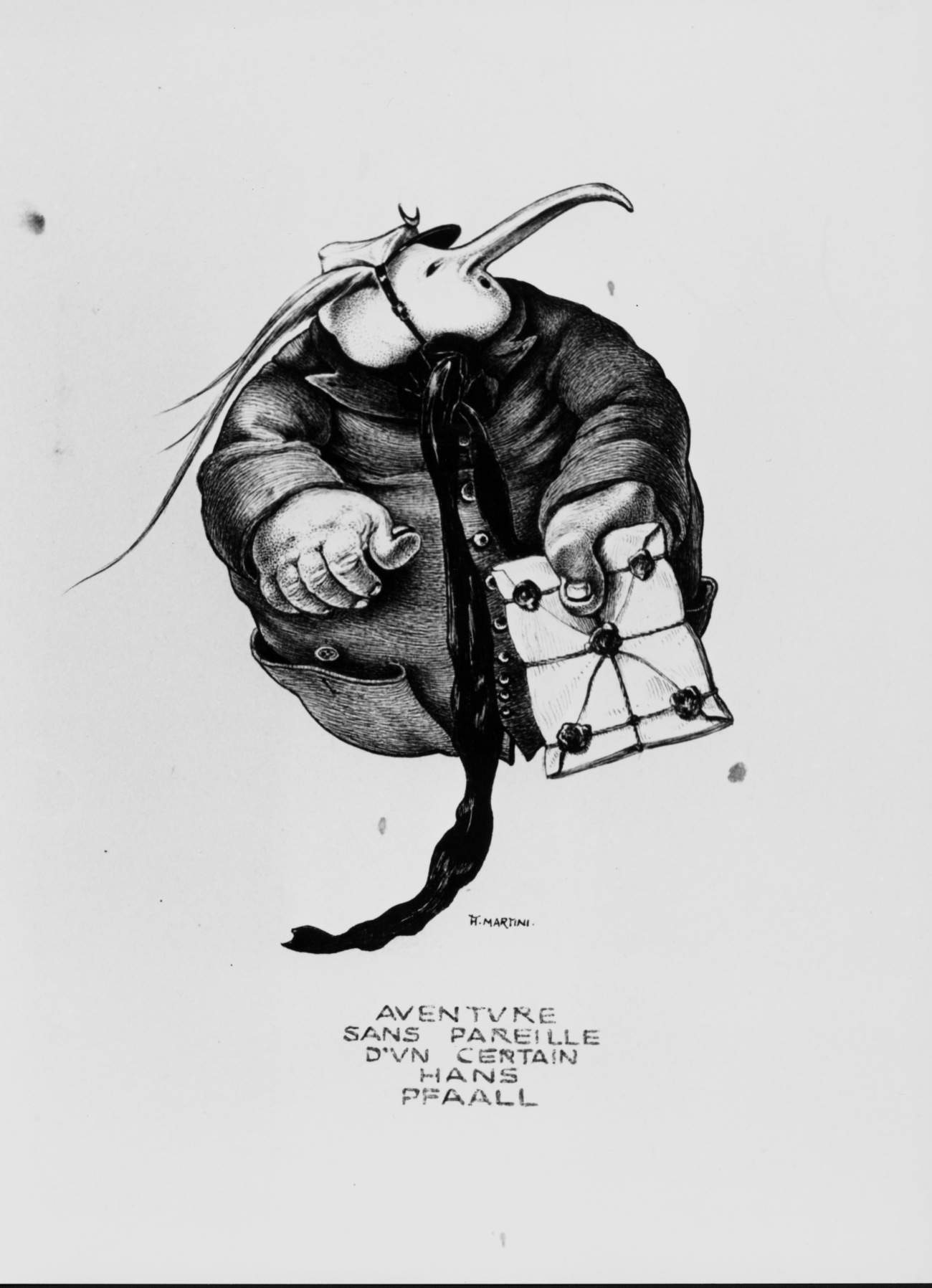

![Alberto Martini, Incantesimo [or Felina] (1914-15; hand-colored lithograph, 123 x 85 mm; Verona, Biblioteca Civica)](https://cdn.finestresullarte.info/rivista/immagini/2024/fn/alberto-martini-incantesimo.jpg)
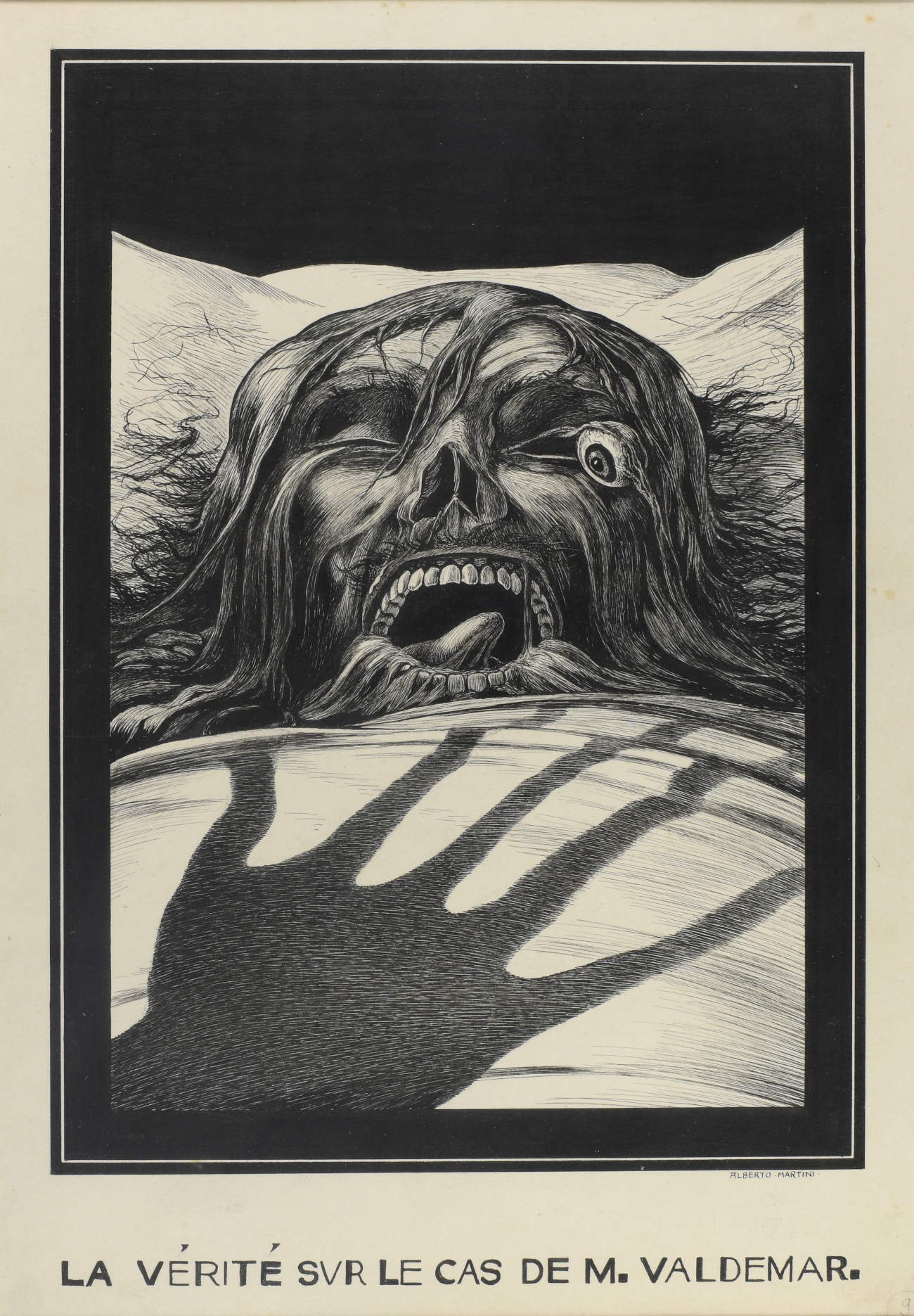

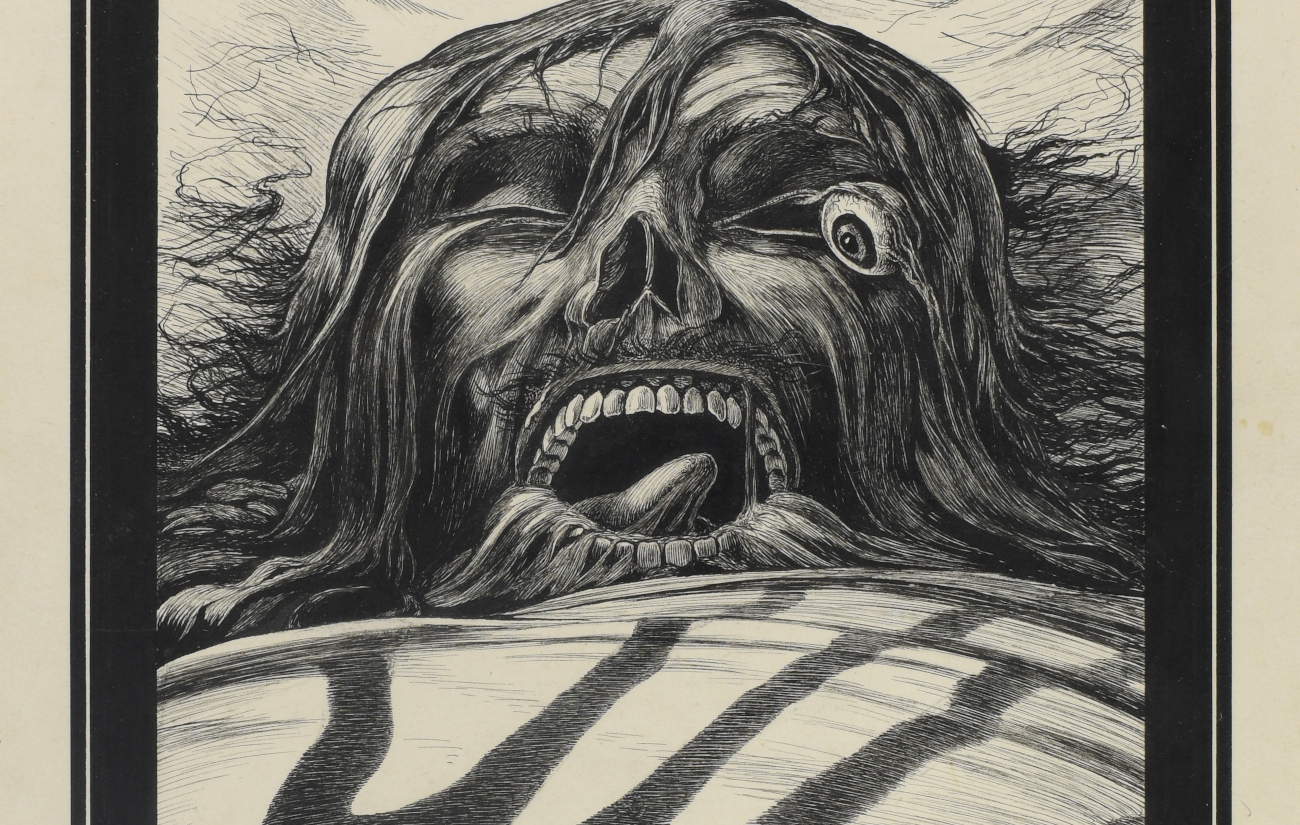 |
| An exhibition in Oderzo celebrates Alberto Martini and his drawings of Edgar Allan Poe's short stories |
Warning: the translation into English of the original Italian article was created using automatic tools. We undertake to review all articles, but we do not guarantee the total absence of inaccuracies in the translation due to the program. You can find the original by clicking on the ITA button. If you find any mistake,please contact us.





























